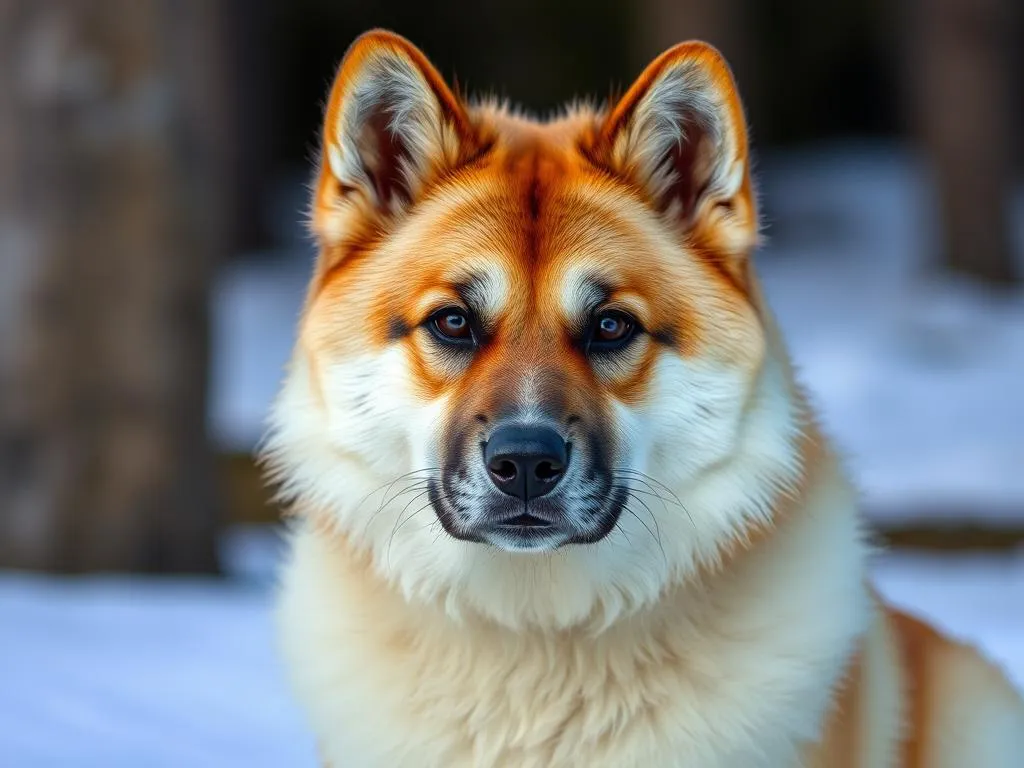
Introduction
The Akita is a majestic and noble breed known for its loyalty and strong guarding instincts. Originating from Japan, this large dog has captured the hearts of many with its striking appearance and devoted nature. However, before welcoming an Akita into your home, it’s crucial to understand both the pros and cons of owning this breed. Each dog has its unique traits, and the Akita is no exception. This article aims to provide detailed insights into the breed, helping potential dog owners make informed decisions.
History of the Akita
Origins of the breed
The Akita breed traces its roots back to the mountainous regions of northern Japan, where it was initially bred for hunting large game, such as bears, boars, and deer. Historically, these dogs were revered for their strength and courage. The breed’s name comes from the Akita Prefecture in Japan, where it was first developed.
Cultural significance and symbolism
In Japan, the Akita is not just a dog; it symbolizes good health, happiness, and long life. A notable tale that highlights the breed’s significance is the story of Hachiko, an Akita known for his unwavering loyalty to his owner, waiting at the train station every day long after his owner’s passing. This story has made the Akita a beloved figure and a symbol of loyalty worldwide.
Development and recognition
Over the years, the Akita has undergone several changes, including the development of two distinct varieties: the Japanese Akita Inu and the American Akita. The American version emphasizes a more robust build and a broader head, whereas the Japanese version maintains a more fox-like appearance. The breed was officially recognized by the American Kennel Club (AKC) in 1972, and its popularity has surged since then, leading to a greater appreciation of its rich heritage.
Physical Characteristics
Size and weight
The Akita is a large breed, typically weighing between 70 to 130 pounds. Males generally stand about 26 to 28 inches tall at the shoulder, while females are slightly smaller, ranging from 24 to 26 inches. This size makes them an imposing presence in any household.
Coat and color varieties
The Akita’s coat is thick and double-layered, providing insulation against cold weather. Common coat colors include white, brindle, and various shades of red. Grooming is essential, as they shed heavily, especially during seasonal changes. Regular brushing is recommended to manage shedding and keep their coat healthy.
Distinctive features
One of the most distinctive features of the Akita is its erect triangular ears and curled tail. Their broad heads and strong jaws contribute to their powerful appearance, while their expressive eyes can convey a range of emotions from warmth to aloofness.
Temperament and Behavior
General temperament of the Akita
The Akita is known for its loyalty and protective instincts. They are often described as dignified, courageous, and independent. While they can be affectionate with their families, they may also exhibit aloofness toward strangers, which makes them excellent watchdogs.
Socialization needs
Early socialization is crucial for an Akita to thrive in a family environment. Introducing them to various people, pets, and situations can mitigate their natural wariness of strangers and help them develop into well-rounded dogs. Without proper socialization, they may become overly protective or aggressive.
Training considerations
The Akita’s intelligence can be a double-edged sword. While they are capable of learning commands quickly, their strong-willed nature can make obedience training a challenge. Positive reinforcement techniques, such as treats and praise, work best. Consistency and patience are key to successful training.
Pros of Owning an Akita
Loyalty and companionship
One of the most celebrated pros of owning an Akita is their unwavering loyalty. They form deep bonds with their families and can be incredibly affectionate. Their protective instincts make them not only loving companions but also guardians of the home.
Protective instincts
Akitas are natural protectors. Their guarding instincts can be a significant advantage for families seeking a dog that will keep a watchful eye on their loved ones and property. Their presence alone can deter intruders, providing peace of mind for homeowners.
Low exercise requirements
While Akitas enjoy playtime and daily walks, they don’t require excessive exercise like some other breeds. A couple of moderate walks each day and some playtime in a secure yard can keep them content. This makes them suitable for various living situations, including homes with smaller yards.
Cleanliness
Akitas are known for their relative cleanliness. They have a natural instinct to keep themselves groomed and often exhibit minimal odor, making them a good choice for individuals who prefer a dog that doesn’t require constant bathing.
Cons of Owning an Akita
Strong-willed nature
One of the primary cons of owning an Akita is their strong-willed nature. This characteristic can pose challenges during training, as they may not always comply with commands. Potential owners should be prepared for a committed training regimen to instill obedience.
Potential for aggression
Without proper socialization, Akitas can display aggression, particularly towards other dogs or unfamiliar people. They have a strong prey drive, which may lead to challenges if not managed correctly. Understanding the risks associated with this breed is essential for responsible ownership.
Space requirements
Despite their adaptability, Akitas thrive in environments that provide ample space for exercise and exploration. They are not ideal for apartment living unless the owner is committed to providing regular outdoor activities. A secure, spacious environment is crucial for their well-being.
Health issues
Like many breeds, Akitas are prone to specific health concerns, including hip dysplasia, autoimmune disorders, and certain types of cancer. Regular veterinary check-ups and a healthy diet can help mitigate some of these risks, but potential owners should be aware of these issues.
Ideal Living Situations for Akitas
Best types of families or individuals
Akitas are best suited for families or individuals who understand the breed’s unique characteristics. They do well in active households where they can receive attention and exercise. Those with experience in handling strong-willed breeds will find the Akita to be a more manageable companion.
Living environment considerations
While Akitas can adapt to various living situations, they flourish in homes with yards where they can roam and play. An apartment setting may work if the owner is proactive about regular outdoor activities. A secure environment is essential to prevent wandering, as Akitas can be escape artists.
Interaction with children and other pets
When properly socialized, Akitas can coexist peacefully with children and other pets. However, supervision is recommended, especially with smaller animals, due to their strong prey drive. Teaching children how to interact with dogs respectfully can foster a positive relationship between them and the Akita.
Care and Maintenance
Grooming needs
Regular grooming is necessary for maintaining an Akita’s coat. They shed heavily, particularly during seasonal changes, so weekly brushing is recommended. Bathing should be done as needed to keep their coat clean without stripping natural oils.
Diet and nutrition
A balanced diet is vital for the overall health of your Akita. High-quality dog food that meets their nutritional needs is essential. Consulting with a veterinarian can help tailor a diet that suits your dog’s age, size, and activity level.
Exercise requirements
While Akitas do not require excessive exercise, they benefit from daily activities to keep them mentally and physically stimulated. Regular walks, play sessions, and opportunities to explore can help prevent boredom and destructive behavior.
Regular health check-ups
Routine veterinary visits are crucial for maintaining the health of your Akita. Vaccinations, parasite prevention, and regular check-ups can help catch potential health issues early, ensuring a long and healthy life for your furry friend.
Conclusion
The Akita is a breed filled with loyalty, strength, and a rich cultural history. Understanding the pros and cons of owning an Akita is essential for anyone considering bringing one into their home. While they can be protective and loving companions, they require dedicated training and socialization to thrive. Ultimately, responsible dog ownership and a commitment to understanding the breed’s unique needs can lead to a fulfilling relationship with this remarkable dog.
FAQs about Akitas
Are Akitas good with kids?
Yes, Akitas can be good with children if properly socialized. However, supervision is advised, especially with younger kids.
What are some common health issues?
Akitas can be prone to hip dysplasia, autoimmune disorders, and certain cancers. Regular check-ups can help manage these risks.
Do Akitas require a lot of exercise?
No, while they enjoy exercise, Akitas do not require excessive activity. Daily walks and playtime are usually sufficient.
Can Akitas live in apartments?
While not ideal, Akitas can live in apartments if their exercise needs are met with regular outdoor activities.
How should I socialize my Akita?
Start socializing your Akita early by introducing them to various people, pets, and environments to help them develop a well-rounded personality.









